One of the things I’m often asked on the blog, when readers see me take off on a road trip for days or weeks at a time, is this: Who takes care of your garden when you’re away?
Or especially in the summer: How can you even leave your garden with all those tomatoes growing?!
The way we invest in and nurture our plants, they’re practically our babies. And since we can’t very well pack them up in the car, many of us feel tied to the responsibilities of caring for a vegetable garden the way we care for children or pets.
But with careful planning, it is entirely possible to leave your garden for a week or more, guilt-free and stress-free, and actually come back to a garden that’s even bigger and better than you remembered.
I count myself fairly lucky. I have trusted friends who are willing to house-sit, plant-sit, and chicken-sit. They know my house inside and out, and have free reign of the property while we’re gone, encouraged to pick as many vegetables and collect as many eggs as they can eat.
Most of them aren’t even gardeners themselves, but they once kept trays of seedlings alive for 10 days when I was away, raising them from seed to sprout. They simply know what needs watering and when, and consult a list we leave that outlines our schedule.
This was all before we had an automated drip irrigation system in place, so believe me, if you’re still hand-watering the majority of your garden, you should only leave that task to a very close friend or family member who will still like you when you come back from vacation, all glowing and smiling and breathlessly exclaiming, “So, how did it all go?!”
If there’s a trip on the horizon and you haven’t yet made a game plan, establish one now so that come countdown time, the only thing you’re anxious about is what to pack for your time away.
Here are my top tips for taking care of your garden before—and while—you’re traveling.
Disclosure: If you shop from my article or make a purchase through one of my links, I may receive commissions on some of the products I recommend.
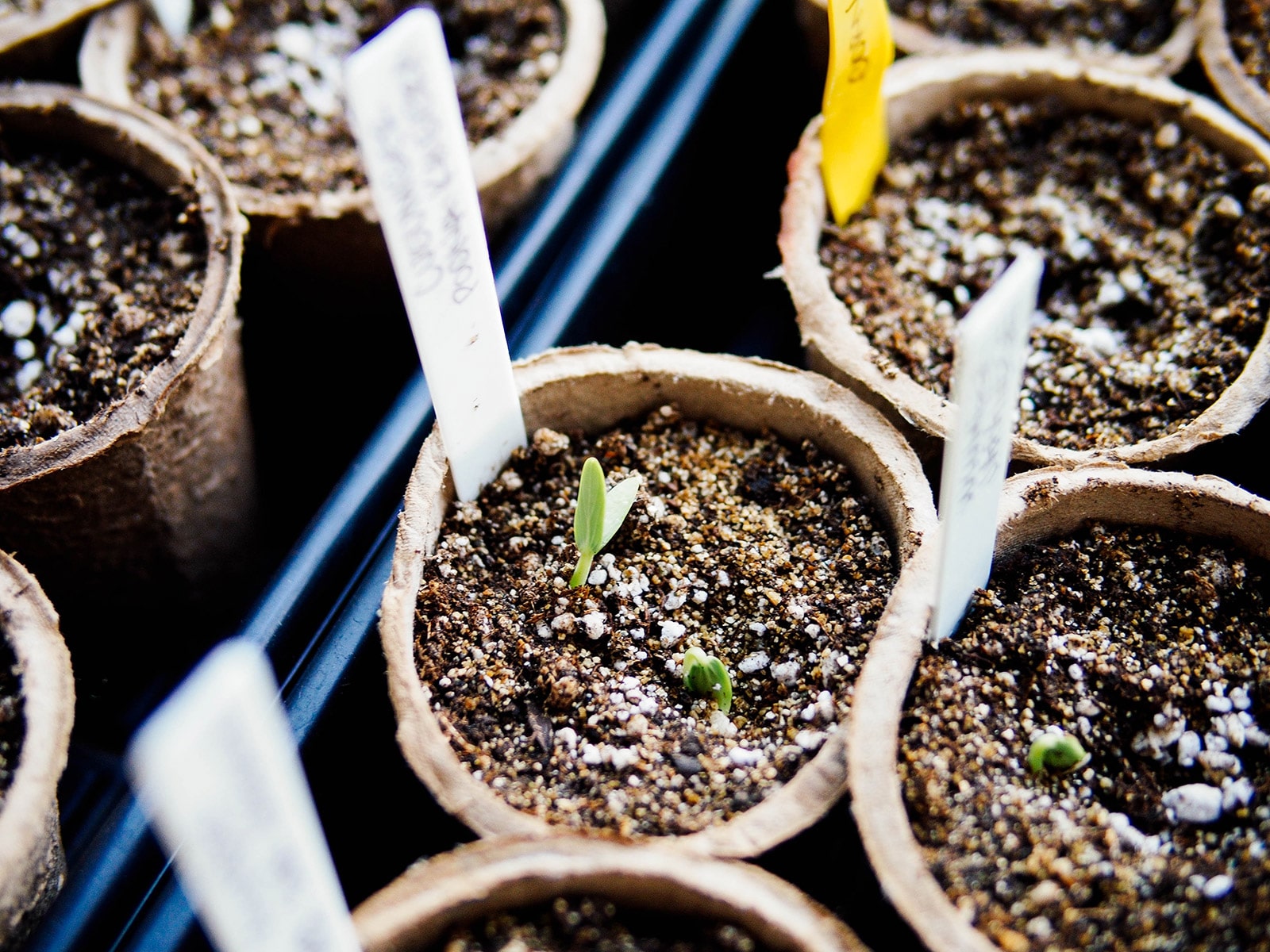
Assess the needs of your garden and houseplants.
If you’ll only be gone for a long weekend, your garden will likely survive without any attention.
But for a week or more away, you’ll need to write a game plan. It can be as simple as a checklist scrawled on paper, or as elaborate as a spreadsheet with dates and detailed instructions.
Make a list of what’s most crucial to care for. Account for your vegetable beds as well as your houseplants, and your lawn as well as your landscaping.
Some things are more high-maintenance than others (like potted plants, new transplants, and shallow-rooted vegetables), while some can make do with a little neglect and still bounce back when you return (like shade plants, drought-tolerant plants, and established perennial herbs and perennial vegetables).
Make note of what will ripen soon and what will go to seed. Knowing the actual needs of your garden will help you focus on the tasks that are most important.
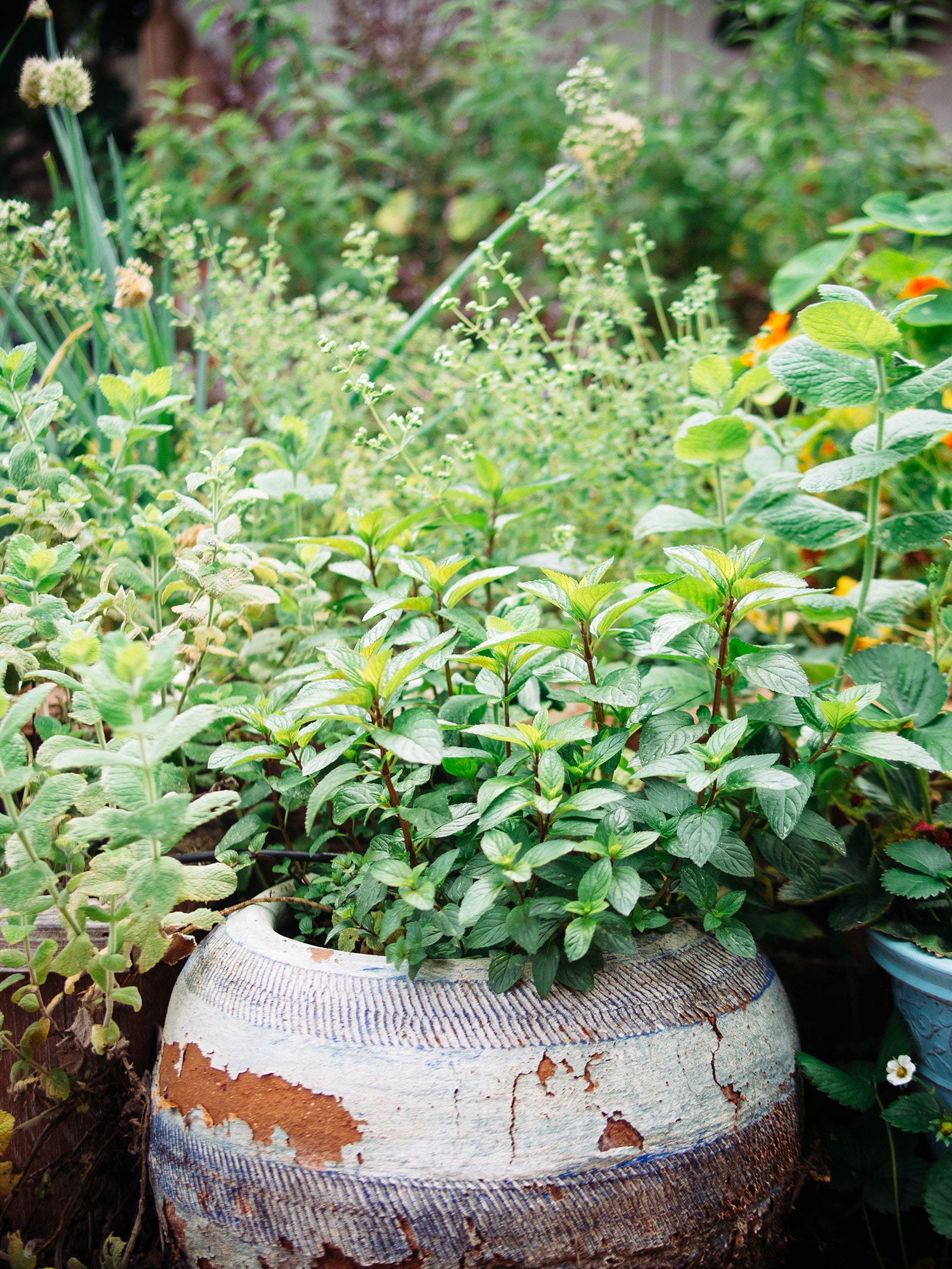
Ask a friend or neighbor to take care of your yard or houseplants.
This is my recommended method for finding a free (or very cheap) plant-sitter. Most people really do not mind taking care of your garden, especially if you ply them with fresh vegetables or offer to return the favor if they have gardens of their own.
Pro tip: Even if you don’t feel comfortable asking a stranger for help, make friends with your neighbors so they’re more apt to pay attention to your home if they suspect something wrong.
But what if you have no friends or neighbors available to assist?
Seek out a house-sitter.
On longer trips, plan ahead and hire a house-sitter to stay in your home.
Sometimes you can find one for free through various house-sitting sites. These people are usually retirees, freelancers, or digital nomads who exchange house-sitting for accommodations while they’re traveling.
Rent out your home.
Sometimes, you can even make a little money by renting your home to a traveler who appreciates having a garden. Put it out to friends and family a couple of months before your trip, and see if anyone has referrals for you.
Do a house swap.
If you have a lot of friends from outside the area, offer a home swap—they can live in (and help take care of) your home while you’re on vacation, and you can stay in theirs while they’re away. It’s a win-win!
Offer your home as a retreat or temporary workspace.
Another tip: Offer your home as a retreat or a quiet space to work in exchange for light gardening or house-sitting duties.
Sometimes, you’ll find writers, artists, or online business owners who are looking for this exact kind of opportunity because it’s cozier than a coffeeshop, but cheaper than a coworking space.
(I know from experience, as I’ve spent a weekend at my friends’ empty house—while they were camping—to focus on writing, and all I had to do was check on their cat and chickens.)
Add plant watering to your pet-sitter’s duties.
If you’re leaving your fur babies at home and have a pet-sitter coming every day to care for them, adding a few houseplants or potted plants to the list is usually not a problem (and often included with other services like bringing in your mail).
Once you’ve retained a trusty plant-sitter, give them the game plan you’ve previously drawn up: what needs to be watered and how often, what should be harvested and when, what needs extra attention and what can be left alone.
Keep things simple so they’re less likely to be overlooked (or done incorrectly). You just need your plant-sitter to do the minimum of what’s required.
Pro tip: Make sure the sitter knows how to shut off the water in case of an emergency. (One time I had a pipe burst in my yard, one week into a four-week vacation! Could’ve been serious buzzkill but the garden was saved and the pipe was repaired with only a couple of phone calls.)
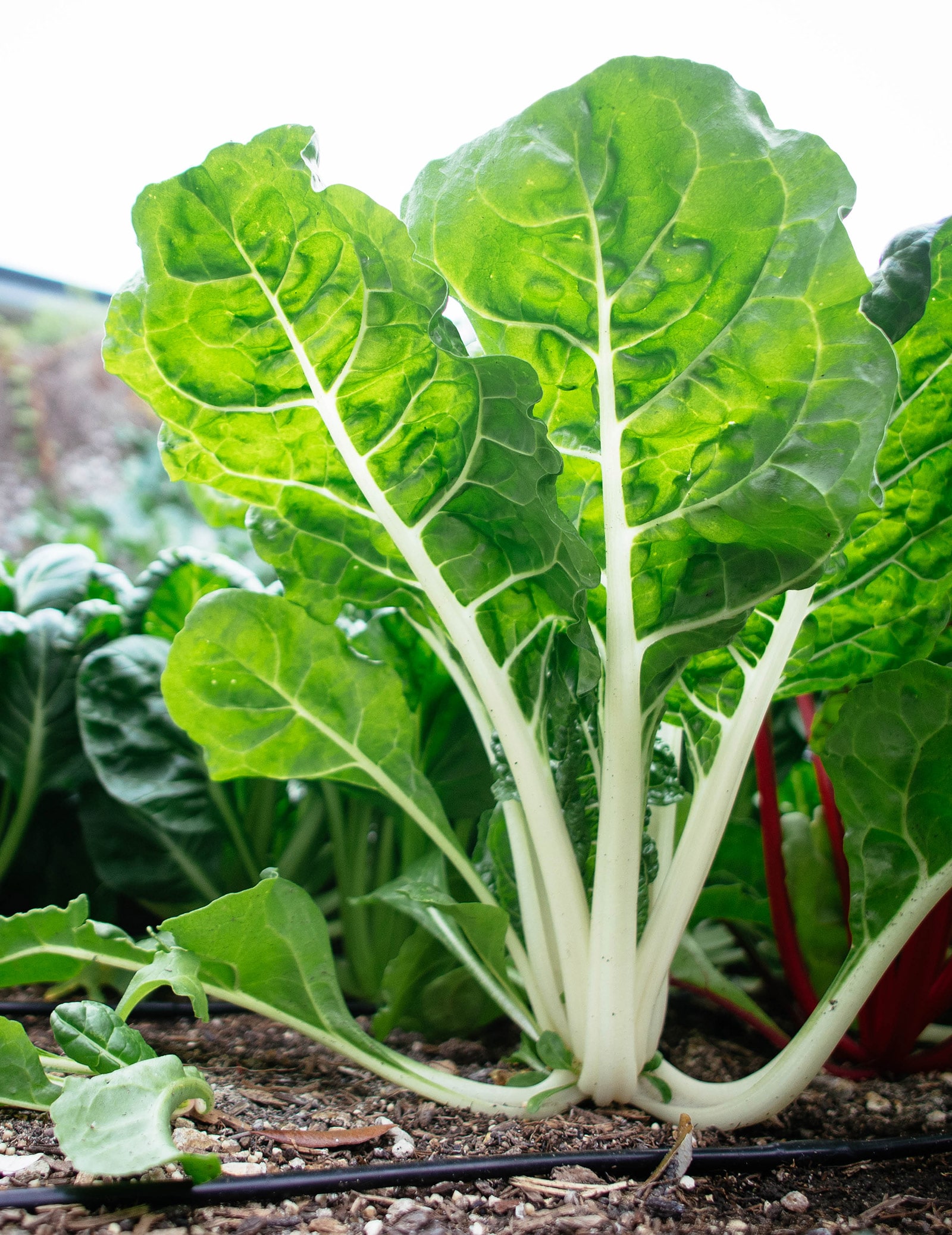
Check the weather and plan accordingly.
If you anticipate days of hot (or rainy) weather ahead, make sure you adjust your watering schedule appropriately.
Consider installing weather-based irrigation controllers for your lawns and landscaping, which automatically adjust the water output for current weather conditions (such as rain, wind, or freeze).
Recommended smart irrigation controllers:
- Orbit B-hyve XR Smart Sprinkler Controller
- Rachio Smart Sprinkler Controller
- Rain Bird Smart Sprinkler and Irrigation System Timer
That way, your irrigation won’t turn on if it’s raining, but may add an extra watering cycle if the weather is drier or hotter than normal.
Related: 7 Hot-Weather Watering Tips to Survive a Heat Wave
If you’re frequently out of town or have a sprawling urban farm, a drip irrigation system set on a timer is a worthy investment.
These days, all-in-one irrigation kits can be bought online and put together with little effort. If you need some guidance, I have a whole lesson on designing and installing a drip system in my online course, Lazy Gardening Academy.
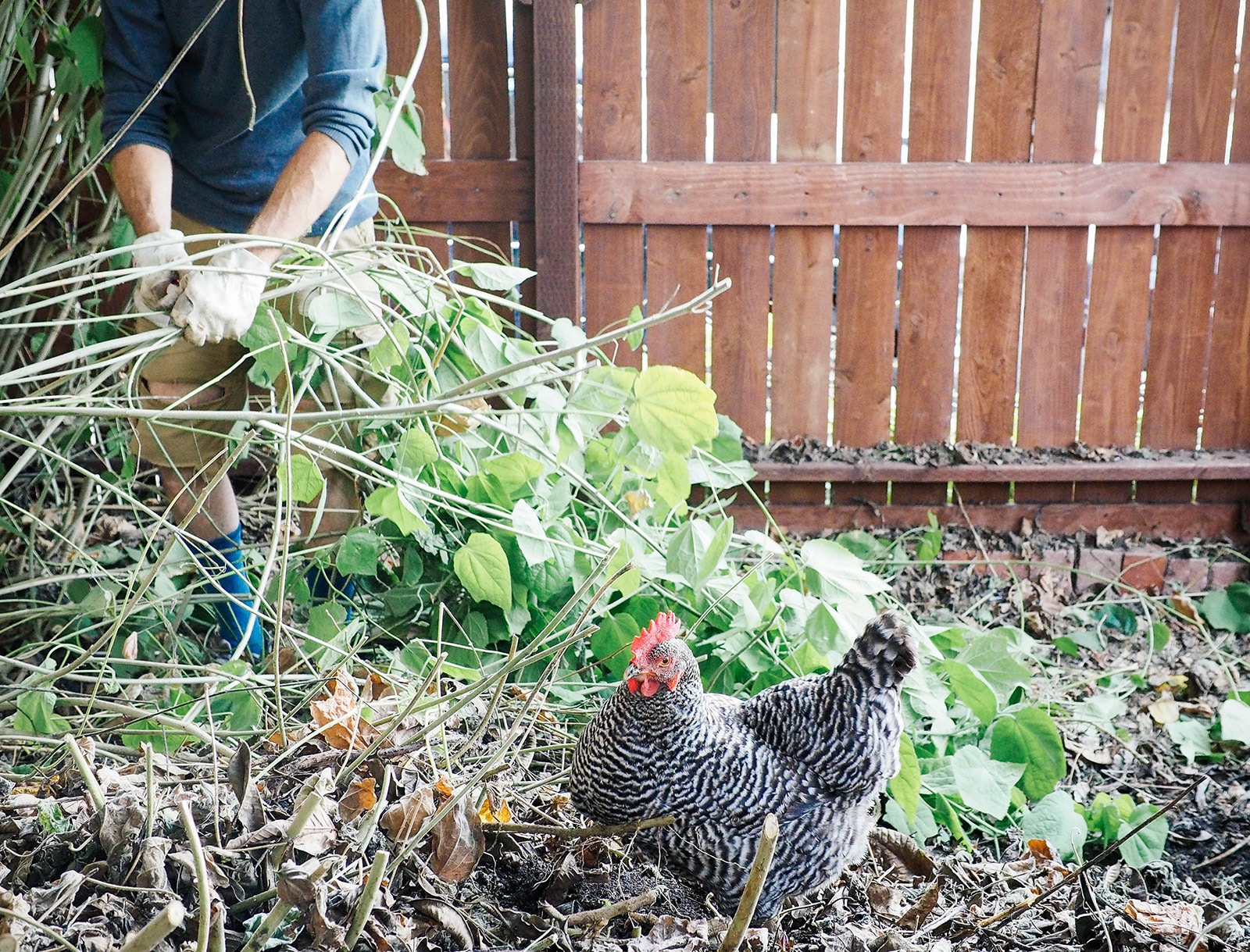
Give your garden a tune-up before you go.
Do any weeding, thinning, pruning, deadheading, fertilizing, or mulching before you leave. Mulching will help your soil retain moisture, smother any weeds, and protect sensitive plants from heat or cold.
Anticipate how much your plants will grow while you’re gone and set up stakes, trellises, or cages to support them. This is especially important if your plants are small now, but may shoot up a foot or more while you’re traveling (like tomatoes, pole beans, or squash that you want to grow vertically).
Read more: Florida Weave: A Better Way to Trellis Tomatoes
Remove ripe (or over-ripened) fruit and any fruit with signs of blossom end rot.
Try to tackle any potential pests and diseases before they become bigger problems (such as aphid infestations or allium rust).
Replace troublesome garden hoses or spray nozzles, refill self-watering containers, and give everything a good, deep watering the day before you leave, especially if no one will be around to check on the garden.
If you’ll be gone on vacation for several weeks in the summer, consider solarizing your garden beds—you’ll save water and come back to a clean slate.
For houseplants, water them deeply and wash their leaves in the shower or under a faucet; clean leaves help maintain overall plant health.
If you have a lot of houseplants to care for, group them together in one spot so your plant-sitter won’t have to run around hand-watering them all… and possibly missing one.
(You can also try this easy trick for keeping your houseplants alive and watered while you’re traveling. All you need is a bathtub!)
For houseplants that don’t need any maintenance, move them away from sunny windows and into shadier spots to retain their moisture.
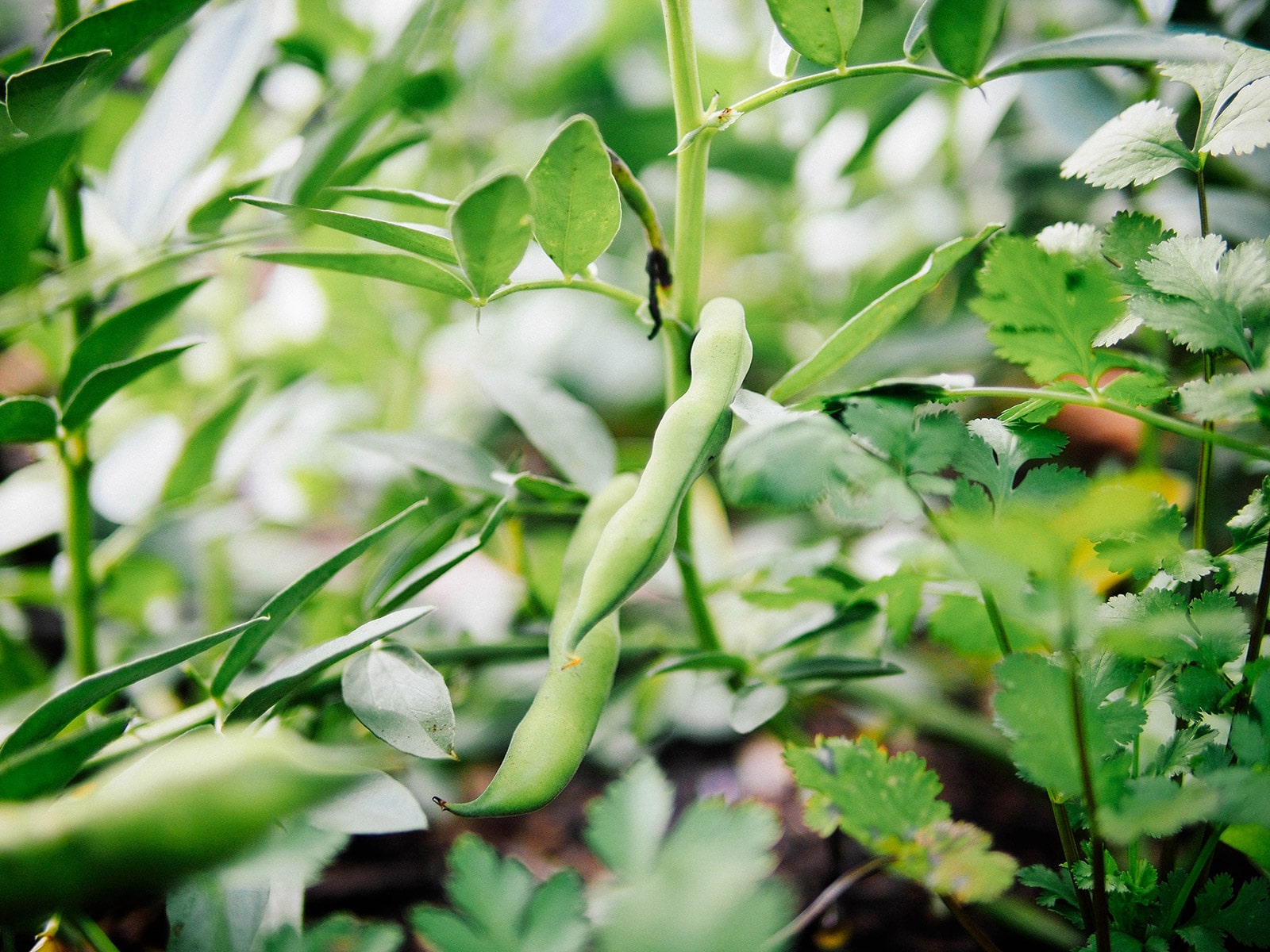
Pick, pick, pick.
Even if you’ve set up your entire garden to be watered automatically, you should still arrange for someone to stop by and harvest vegetables to keep your plants productive. I have never had friends turn down a chance to go shopping in their own personal farmers’ market!
Regular harvesting leads to higher yields, as the frequent picking forces the plant to produce more fruit for its survival. Because no matter what we want to believe, a tomato plant only exists to set enough seed to make tomato babies, and not to give us bottomless bowls of fresh tomato salsa.
You could even take advantage of the situation by harvesting unripe fruits for pickled green tomatoes or green tomato salsa verde.
Fruits left to overripen on the plant will make it think its job is done. So bring in all those cucumbers, beans, and zucchini, and gift them to friends and neighbors if you can’t store or use them all.
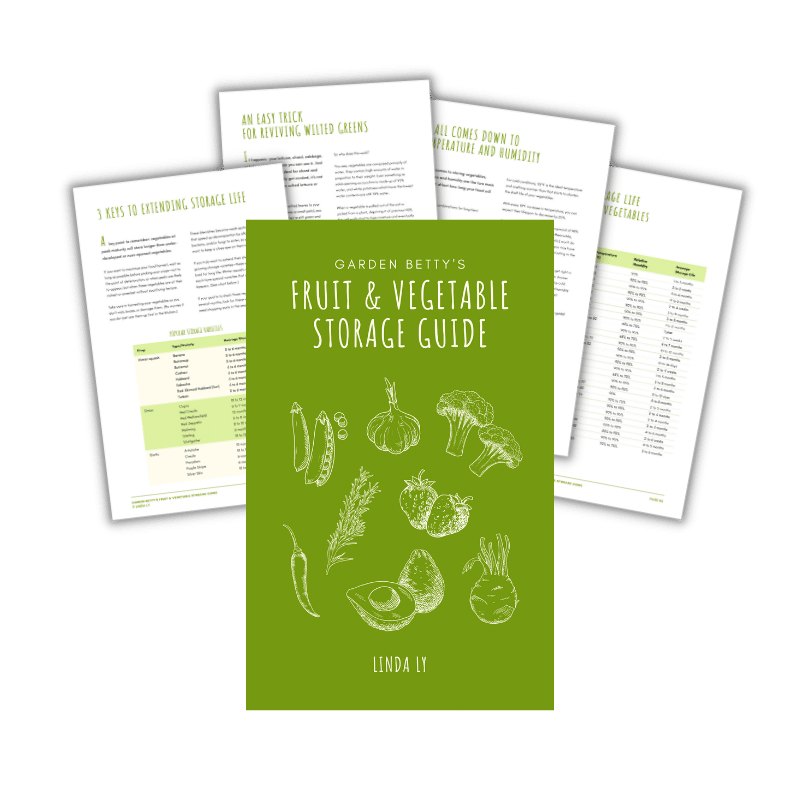
Don’t let good food go to waste!
Download my Fruit & Vegetable Storage Guide for printable charts, helpful tips, and secret tricks for keeping your produce super fresh for as long as possible.
When it comes to herbs like basil, mint, cilantro, and parsley, cutting them back encourages bushier growth and delays flower production. So don’t be afraid to harvest a generous handful of stems before you leave!
Cut herb stems can be stored in a glass or jar of water (like a flower bouquet) on the counter for several days. Tender herbs (like cilantro and parsley) can actually last weeks in the refrigerator if their stems are kept in a jar of water and their leaves covered with an upside-down zip-top bag.
(Don’t keep basil in the fridge like this, however; the cold and humidity can result in black spots on basil leaves. Basil sprigs do just fine on the counter, in a jar, with a couple inches of water at the bottom.)
If you plan to be away for a longer period, you can freeze the herbs for future use, or use this oven-drying method to make your own fresh dried herbs.
Short on time? You can also tie the herb stems into a bundle and hang them up (or leave them out on the counter) to dry while you’re gone.
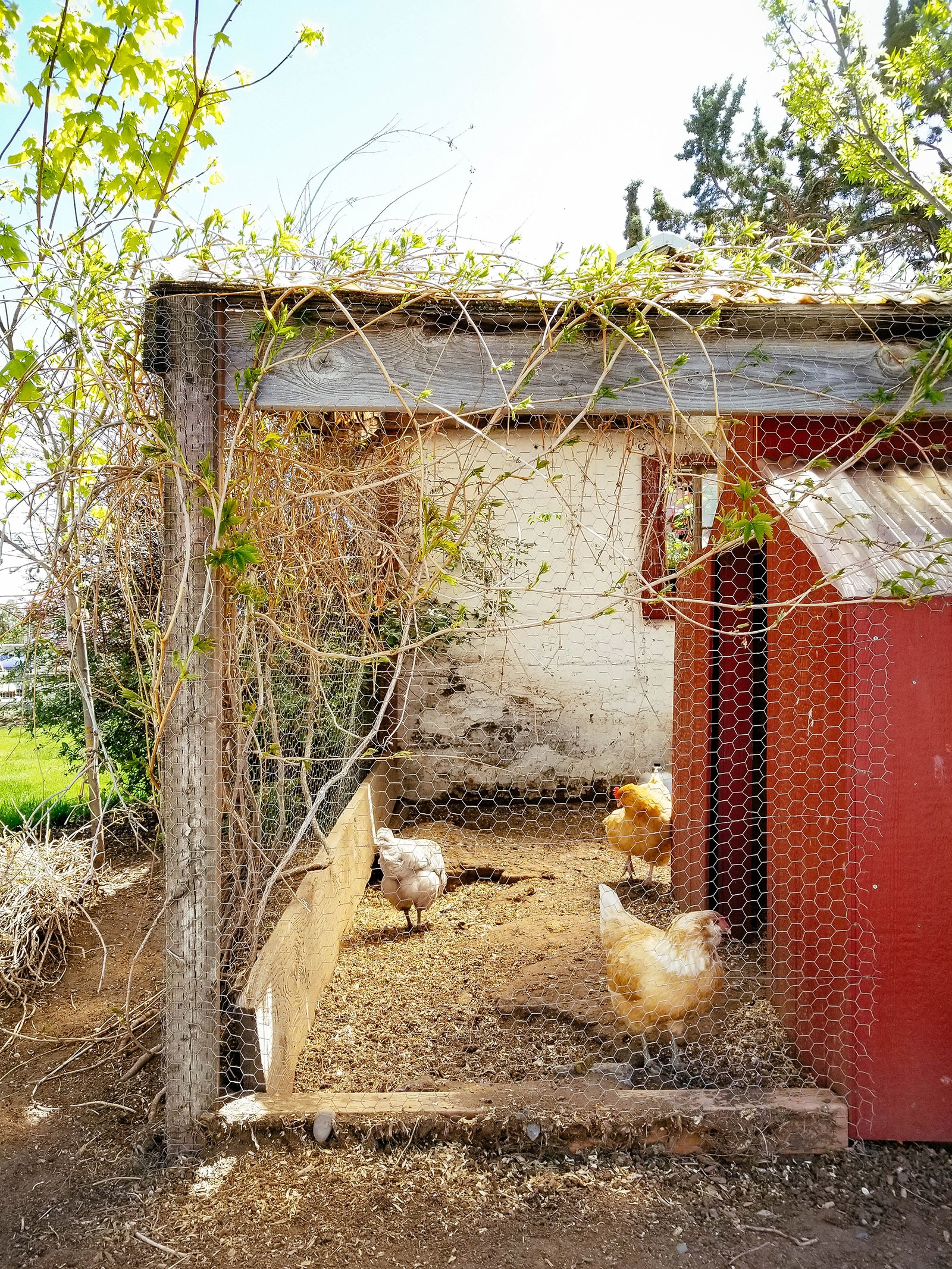
What about the chickens?
I’ve had various friends volunteer to care for my chickens while I’m away, and it seems to be a popular chore, especially for friends with kids who love to help out.
Chicken-sitting works best if your chickens have a safe, enclosed run to roam and are able to let themselves in and out of the coop.
Pro tip: I use this automatic pop door and it’s a must-have for every chicken coop. No more getting up early to let your chickens out, or rushing back home to make sure they’re locked inside before nightfall. I spent a lot of time researching different doors, and this one has proven itself to be the best for how safe and reliable it is.
If you don’t have a pop door that automatically opens and closes, you’ll have to find a house-sitter who’s diligent about opening the coop each morning and ensuring the flock has roosted each night.
I ask my chicken-sitters to check on my flock every three to four days to collect eggs, give them some treats, and replenish their food and water.
Chickens are very low-maintenance as far as pets go, and when I’m gone for just the weekend with no sitters lined up, I simply make sure I leave extra food and another freshly filled water fountain in the run for them.
(You’ll need two water fountains for a small flock, and at least three fountains if you have more than five chickens. This ensures they’ll always have water, even if one fountain leaks or gets knocked over.)
If your chickens are used to free-ranging, you can keep them occupied in the run with a cabbage piñata, treat ball, or “flock block.” (I like this one for a weekend away, or this one for large flocks or longer trips.) The natural pecking and scratching is nutritious entertainment for them!
Pro tip: You can read more about how I keep my chickens healthy and active, no matter what time of year it is.
In towns with growing backyard chicken-keeping movements, chicken-sitting services have even sprung up. They can usually be found on Craigslist or Nextdoor, through urban farming meet-up groups or Facebook groups, and on the bulletin boards of local feed stores.
You can also make friends with a fellow urban farmer and swap chicken-sitting services, ensuring your flock will be in the hands of someone who’s experienced with poultry.
As you would with any type of pet-sitter, make sure your chicken-sitter has your vet’s contact info and, preferably, knows how to handle minor issues (like feather pecking or broodiness).

And then… relax!
I’ll admit, sometimes I ask my friends to send pictures and updates on the garden and the chickens. I’ve trained myself to accept any failures, knowing I can always start over. I feel my heart leap when they say the cucumbers are “growing like crazy… can’t keep up.”
That’s magic to my ears!
But for the most part, it’s outta-sight-outta-mind for me. I love the feeling of coming back after a week or two away and being overwhelmed with what seems like a sudden growth spurt in the garden. Sometimes it feels like everything has doubled or tripled in size!
Not being there day to day and seeing the growth in incremental stages means it always seems more dramatic than it really is. By the time I’m settled in at home, I’m back to the usual routine in the yard… and planning my next trip.
This post updated from an article that originally appeared on November 20, 2014.
View the Web Story on taking care of a garden while traveling.


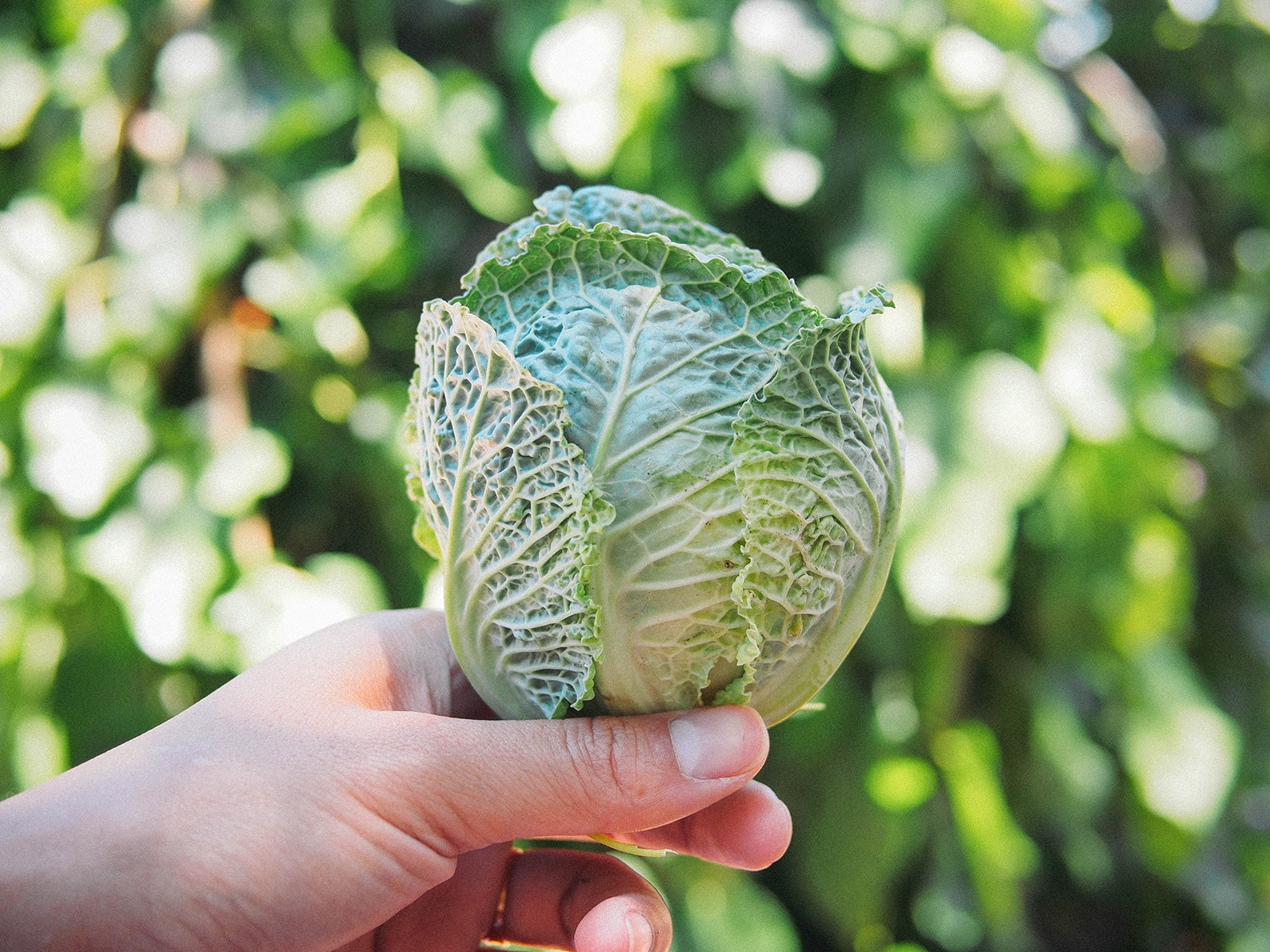













Taking Care of Your Urban Farm While You’re Traveling http://t.co/kaRx955E7q #gardenchat < TY for RT! @fredatours
Great tips from @theGardenBetty Taking Care of Your Urban Farm While You’re Traveling http://t.co/HwLLtyAKlj
RT @theGardenBetty: Taking Care of Your Urban Farm While You’re Traveling http://t.co/cNRA6LSaNR #gardenchat < TY for RT! @TheGardenChat
Taking Care of Your Urban Farm While You’re Traveling http://t.co/cNRA6LSaNR #gardenchat < TY for RT! @TheGardenChat
Go away for days (or weeks!) without the guilt. Taking Care of Your Urban Farm While You’re Traveling http://t.co/EepgCT90TI #gardenchat
Planning a long vacation this holiday season? Taking Care of Your Urban Farm While You’re Traveling http://t.co/n4b8Gfm48a #gardenchat
RT @theGardenBetty: Take a week or more away from home… stress-free. Taking Care of Your Urban Farm While You’re Traveling http://t.co/ka…
Take a week or more away from home… stress-free. Taking Care of Your Urban Farm While You’re Traveling http://t.co/kaRx955E7q #gardenchat
RT @TheGardenChat: RT @theGardenBetty: Keep your garden thriving : Taking Care of Your Urban Farm While You’re Traveling http://t.co/HIjbBX…
RT @TheGardenChat: RT @theGardenBetty: Keep your garden thriving : Taking Care of Your Urban Farm While You’re Traveling http://t.co/HIjbBX…
RT @TheGardenChat: RT @theGardenBetty: Keep your garden thriving : Taking Care of Your Urban Farm While You’re Traveling http://t.co/HIjbBX…
RT @theGardenBetty: Keep your garden thriving : Taking Care of Your Urban Farm While You’re Traveling http://t.co/HIjbBXdT0B #gardenchat
Excellent post. We tend not to travel too much in the summer when the garden is in full swing, but I usually can tempt a few neighbors into coming over and helping themselves to fresh green beans or tomatoes if necessary. And I never seem to have a problem finding someone to look after the chickens. One year, we were gone over Easter weekend and came home to find one of the hens sitting on dyed Easter eggs in the nesting box. The chicken sitter was having a little fun with us. 🙂
Haha, I like their sense of humor!
Great post…lots of good tips. Thankfully i have the best house sitter and an automatic drip system in my raised veggie bed : ) I did share it on my Pinterest board Grow Your Own! Happy Thanksgiving!
Thank you Laurin, and Happy Thanksgiving to you too!
Keep your garden thriving with careful planning: Taking Care of Your Urban Farm While You’re Traveling http://t.co/cNRA6LSaNR #gardenchat
Going away for a week or more? Don’t fret: Taking Care of Your Urban Farm While You’re Traveling http://t.co/D9xnewEsCu #gardenchat
Blogged on Garden Betty: Taking Care of Your Urban Farm While You’re Traveling http://t.co/eCngQAm9np